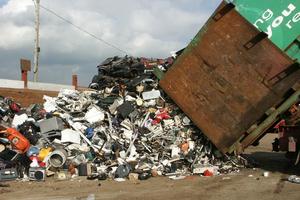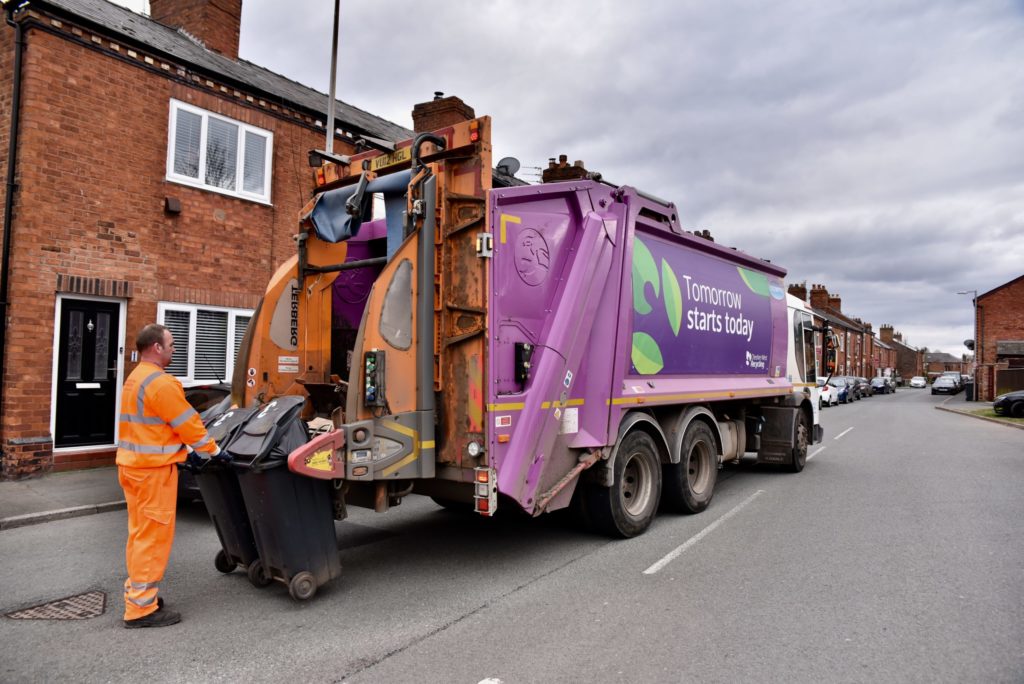Peter Bornand, now an international consultant, who had been responsible for the establishment of the first WEEE take-back initiative in Switzerland in the early 1990s spoke about the development of Swiss waste policy over the past 50 years. Swiss waste management has developed from dependency on municipalities and landfill, through incineration to the current position. The current position includes a large amount of revenue being used for the remediation of those early landfills.
Of the 5m tpa (660kg per capita) of municipal solid waste (MSW) now generated in Switzerland half is incinerated and the other half recycled. The recycling comprises:
- 48% paper
- 30% compostables
- 11% glass
- 4% WEEE
- 7% other materials, such as: textiles, PET, cans and batteries
The responsibility for recycling is shared between the community and a number of producer responsibility organisations (PROs) working voluntarily. The PRO for e-waste reclaimed 108,000 tonnes in 2007, 90% of aluminium cans were recycled, 82% of steel cans and 20,000 tonnes of textiles. Regulatory systems had been instituted by the Swiss Government for portable batteries because the government wants to push the current 65% recovery rate up to 80% and the glass manufacturers could not agree to higher targets without legislative backing. The current glass bottle recycling rate is 95%. Community based systems are responsible for recovery paper and composting of bio-waste.
The ORDEE agreement, which forms the basis of the voluntary arrangement between the EEE producers and government, runs to only four pages. It includes an obligation on consumers to return WEEE separately, unlike the WEEE Directive. The Swiss WEEE system has worked on consensus over the past 16 years and now achieves the highest result for recovery in Europe with 14kg per person in 2007.
Peter Bornand stressed that we should regard WEEE as e-resource as in 2007 the following had been returned to use:
- 56,700 metals
- 15,000 tonnes plastics
- 9,600 tonnes glass
- 17,200 tonnes metal/plastics mix
- 1,100 tonnes printed circuit board
- 2,100 tonnes cable
- 1,000 tonnes hazardous material (1%) which needed treatment and disposal
The Swiss have used an advanced recycling fee since the early 1990s for all EEE products. One of the problems has been at what level to set the fees as the costs of the system are fixed but the potential revenues for the system are highly dependent on the value of secondary materials. The main elements of the cost structure break down as follows:
- Collection 7-9%
- Logistics 19-25%
- Packaging and batteries 11%
- Administration 3-4%
However, the revenue has varied, in the case of copper in 2008 from over €9000 to less than €3500 more recently.
Batteries in Spain
Julio Lema, CEO of the largest of Spain 9 WEEE compliance schemes, ASIMELEC (Asociacion Multisectorial de Empresas Esponolas de Electronica y Comunicaciones), is also responsible for the main portable battery scheme in Spain, Ecopilas. Mr Lema explained that there some municipalities which had provided recovery facilities for portable batteries prior to the law changing. However, in most cases the batteries were collected and then disposed of as there was limited provision for recycling in Spain. The change of the law due to the introduction of the Batteries Directive had forced a change and now all batteries collected would have to be put through a recycling process.
Julio Lema estimated that there were 400 million portable batteries used each year in Spain. To reclaim the batteries Ecopilas is planning to provide containers in 30-40,000 retail outlets and the largest already have these facilities in place. Once aggregated at regional distribution centres using reverse logistics from the shops the secure cases of batteries are then sent to a sorting centre. There is now a semi-automated portable battery plant located in Bilbao where batteries are placed on a picking belt and the non-alkaline batteries are then removed and placed in separate containers. The remaining alkaline batteries are then automatically sorted by size.
The recycling of the zinc alkaline batteries is through a steelworks in Bilbao. It is claimed that 75% recovery is achieved, from the zinc and the carbon portable batteries mainly, and that even the residue can be recycled through the use of the slag from the steelworks for the construction of roads. Clearly there is a need to ensure that there is a coherent definition of recycling for portable batteries but unfortunately this not likely to be agreed until 2010, only a year before the recycling targets are due to be achieved under the Batteries Directive.











Subscribe for free